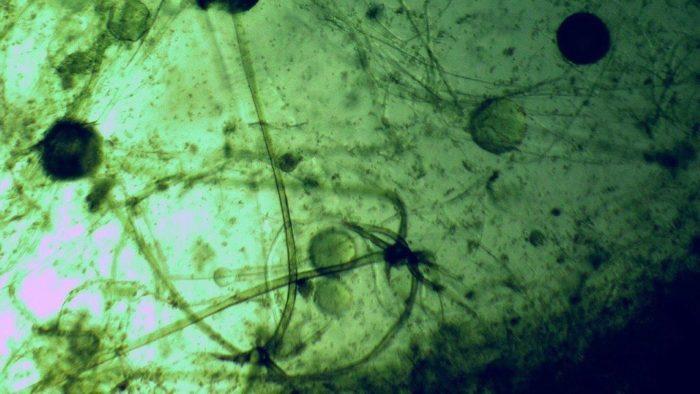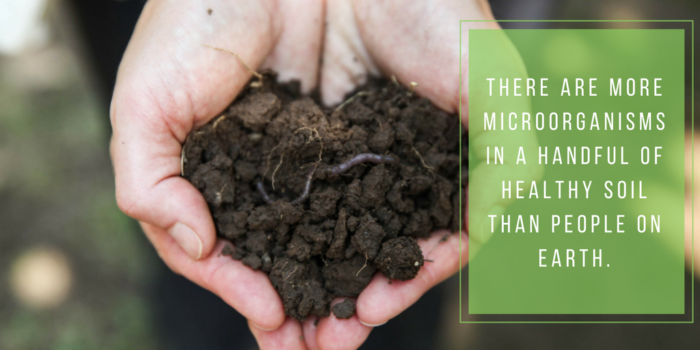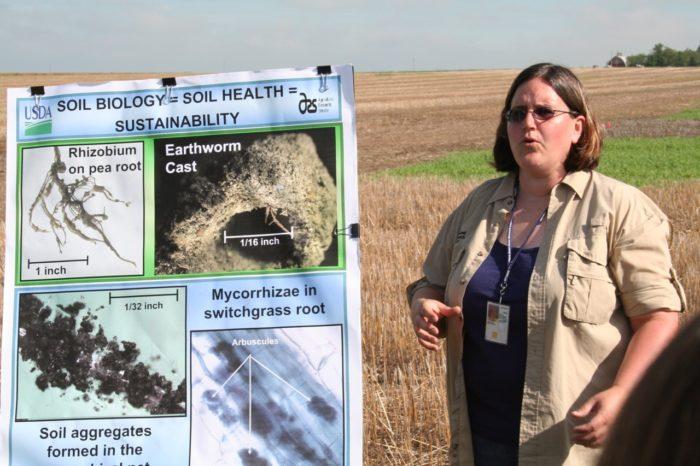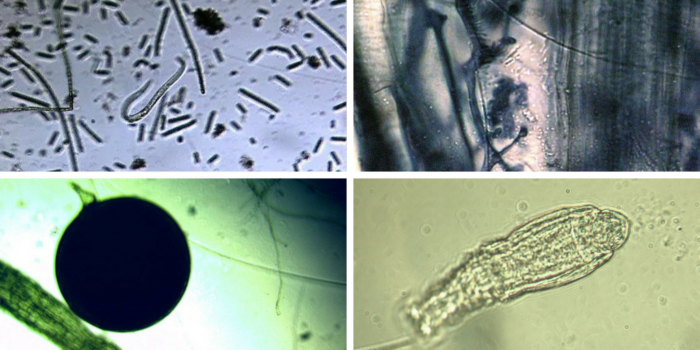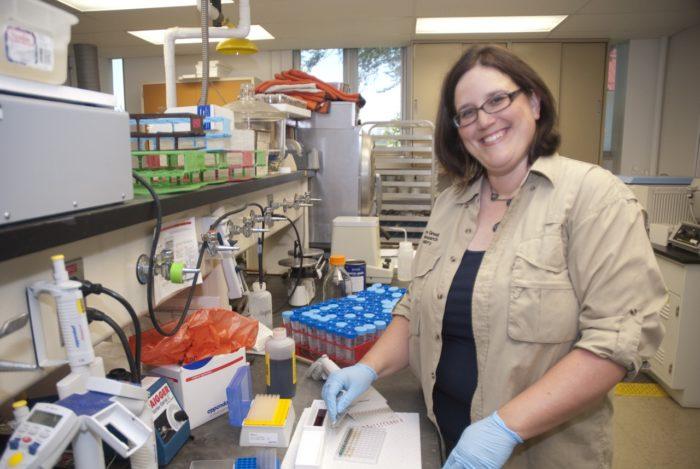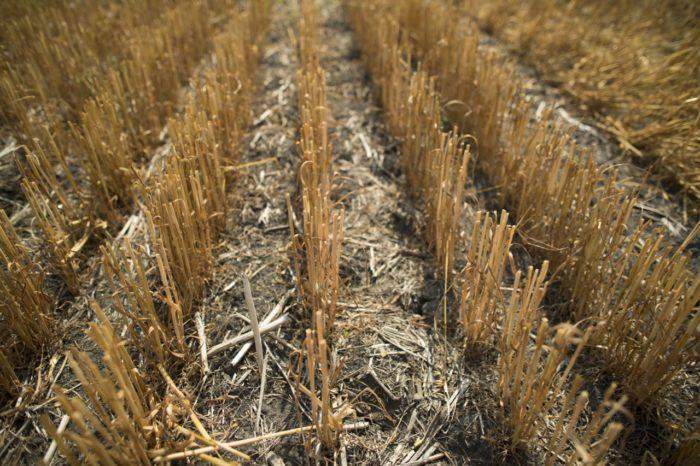Stomachache? Soil gets them, too
Stomachache? Soil gets them, too
If your mother told you it’s important to chew your food, she was right. Dr. Kris Nichols, microbiologist and former chief scientist of Rodale, can scientifically prove it.
“We all have microbes that process food in our stomachs, and if you don’t chew your food well, the microbes get upset and lead to a stomachache,” she says.
Believe it or not, soil acts in the exact same way. In soil, the “chewers” are tiny unseen insects called microarthropods. They are responsible for breaking down organic matter so that good bacteria and fungi can attack it and release plant-available nutrients.
Sadly, much of our earth has a stomachache. Certain chemicals (such as insecticides) and agricultural processes like over-tillage can kill those chewers and disrupt the cycle, preventing plants from getting the nutrients they need to thrive.
“We’re finding similarities in ways the human gut and soil process food, and it all comes down to bacteria primarily and some fungi,” explains Nichols. “I like to tell farmers that we need to treat the soil like we’d treat our own bodies. A good diet, consistent meals, and movement are all important.”
For soil, a healthy diet means having most plants growing using regenerative agriculture methods like cover crops and perennials. This helps keep the bacteria – and nutrients that end up in our food cycle – alive and well.
But there are also ways we all can help cure the earth’s stomachache, and it all comes down to education and appreciation.
Get to know dirt, and love it
There are more microorganisms in a handful of healthy soil than there are people on earth. Given everything that goes on in this complex, unseen world, we still don’t understand how it all works.
“We don’t often think about the things we don’t understand, and then we learn to fear them,” says Nichols. “I fell in love with fungus when I was 19, and I have yet to fall out of love with it. If we can look at soil as something more than messy, ugly, dirt, and see it as elegant and essential to our lives, we’ll be able to better understand the connection of where our food comes from.”
When I asked what was so great about fungus and bacteria, she explained that it defines life as we know it. We’re more bacterial than we are human, if you measure the cell count in our bodies.
To spread this appreciation, Nichols plans to develop tools to help farmers, young people, and shoppers become better acquainted with soil.
Drive market demand for regenerative products
Nichols is quick to remind me that soil health is an urgent issue. She’s concerned we’re running out of time to tackle the one true problem, which is that there’s not enough carbon in the earth’s soil.
“I’m encouraged that General Mills is stepping up to the plate and walking the ‘regenerative-agriculture talk’,” she says. “It’s essential that companies help the movement along, because they’re the bridge to the consumer, and can help bring these efforts to the market. We need to get regenerative agriculture going and we need to get this going now.”
Led by the Annie’s, EPIC and Cascadian Farm brands, General Mills is taking action to advance organic and regenerative agriculture.
For example, this spring, General Mills announced a strategic sourcing agreement to convert 34,000 acres of conventional farmland to certified organic acreage by 2020. Farm operators will receive on-the-ground mentorship to advance leading regenerative soil management practices such as no till, crop rotation and cover cropping. General Mills recently used organic ingredients grown on two Montana farm in limited-edition Annie’s products, including its signature Mac and Cheese.
Nichols says consumers can also help fulfill this vision by becoming more educated about what it means for food to be natural, sustainable, non-GMO, organic, etc. – terms that have gotten confusing and at times misleading – and sharing opinions and concerns with political legislators.
She is a member of the General Mills Organic & Regenerative Agriculture Advisory Council (ORAAC), which helps support and advance our sustainability goals.
Nichols was raised on a farm in Minnesota, but she prefers the lab. When she isn’t looking through a microscope or digging through dirt, she enjoys house renovation projects and playing with her four dogs.

